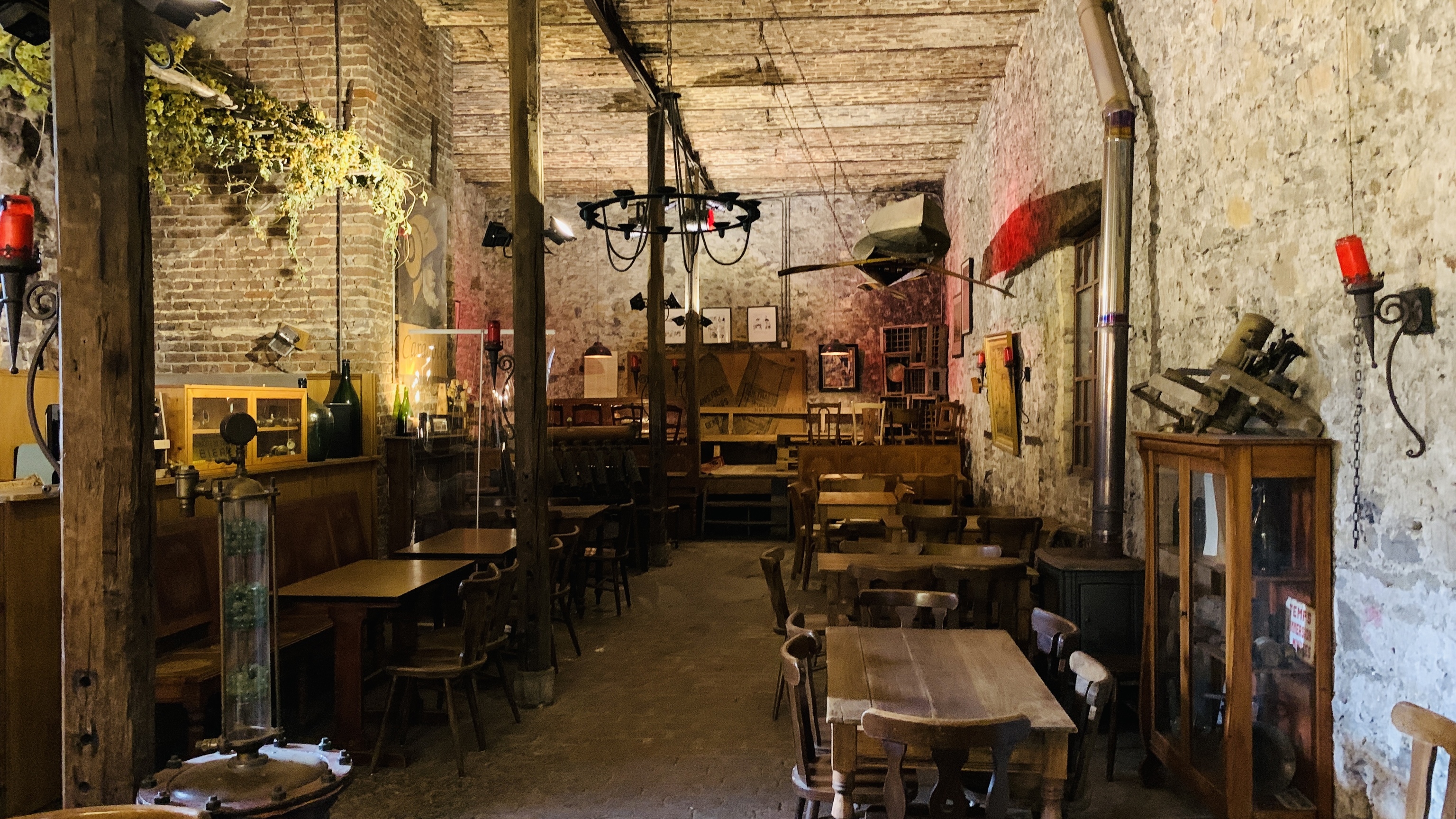Route The 15 best cities in the world for lovers of good food
Plans The most original rural hotels in Madrid: from tree cabins to farms
A small piece of chimney peeks out from the building of the Brasserie Caracole, an artisan brewery in the
Belgian town of Falmignoul,
in the Wallonia region. It is a piece of the original chimney through which the smoke from the production of the factory, founded in 1765 by the
Moussoux family, came out
. The vestige is so small that only when Philippe Attout, one of the workers, points to it from the door, do you notice its existence.
It remains there as a silent witness of what that factory was like until a strong storm blew it down in 1939, destroying the
smoke escape route
and part of the factory.
What is clearly perceived, almost palpable, is the smell of firewood burning inside.
A penetrating aroma of ember and cereal permeates the room that welcomes the visitor.
The tank where the grain is filtered.LB
The factory went through several owners until it closed in 1972. Its boilers would not reignite until
François Tonglet
, a local, decides that it is time for Falmignoul, like almost all Belgian towns, to have its own beer. In 1992, when he bought the facilities, he was faced with the dilemma of throwing everything away and rebuilding it again or preserving the legacy of the locals, who had
been making beer
in the area for
more than
200 years
. Opt for the latter. "It's the system they used when we bought it," he explains to Viajes, "and we didn't want to change it."
According to one of the
most prestigious
beer researchers
, Michael Jackson, known as
Beer Hunter
, is the "only brewer in the world" that uses this system in all the steps in which it is necessary to heat the liquid.
The brewery is named after the nickname that the inhabitants of the area have.
"They walk very slowly,"
explains François, trying to imitate their gait.
"That's why they nickname them snails," he sums up.
And something of that also has the method of this brewery that
takes the Delorean to travel to the past
and make beers as it was done before.
The Delorean leaves at dawn
The 'journey' to the past begins 24 hours before brewing. "At six in the morning the day before we began to add fuel to the fire," says François, while pointing with his finger across the structure
up to the roof,
"specially prepared for this type of factory." This fire will heat a huge jar where hundreds of books of water rest, until it is at the ideal temperature to
incorporate the grain
. The wood, according to Fraçois, allows them to "caramelize the cereal a little more", which makes their beers a little darker.
Once the grain has infused into the water and has produced the must, it passes into another huge jar.
There the
hops "Belgian, American and of countries of the East" will be added
.
The wood will heat the liquid to a boil for as long as the recipe calls for.
Dozens of beer objects decorate the bar.
.B.
In total, the brewery uses 750 kilos of cereal and between 3 and 9 kilos of hops in each batch. The burned wood amounts to 2 cubic meters of firewood in each of its productions. This fuel has allowed them to save a lot on the
electricity or gas bill,
since "the price has practically not risen in three years", explains François. It also results in the economy of the place, "where there is a lot of wood", which they buy from a former factory employee.
When the beer is ready to ferment, it goes to the back of the factory, the area closest to a traditional factory.
In several
40-hectolitre
fermenters,
the yeast
will be in charge of adding the alcohol to the drink.
In a couple of weeks the beer will be bottled and it
will sleep
for at least three weeks in
the cellar basement,
where the temperature is constant, to be ready to consume.
The entire process can take up to two months.
Some of Caracole.LB's beers
The drink is not only widely consumed in the locality and surroundings, it is also exported to various countries, such as the
United States, Italy and Germany
.
Those who take it in town can go to the same factory to taste it and, incidentally, travel back to the past.
From the ceiling hangs the kayak
that François's father used more than 50 years ago, on one wall there is a poster of the wagon that delivered
beer in the 19th century
and, next to the bar, the mill that was used to grind the grain until 1930. What has not changed for more than two centuries is the pride of Belgians in their beers.
According to the criteria of The Trust Project
Know more
Belgium
Europe
sightseeing
GastronomySierra de los Cameros, the cradle of La Rioja's premium cheese that was already eaten in medieval times
This is the castle of Brissac, the highest in France: seven floors, 204 rooms, an adultery and ... a ghost
Awards Two Spanish wineries (one from La Rioja Alavesa and the other from Jerez), among the 10 best in the world
See links of interest
The Palm
Last News
What
Work calendar
Home THE WORLD TODAY
Master Investigation Journalism
The Hormiguero
Besiktas - Sporting CP
Bruges - Manchester City, live
Ajax - Borussia Dortmund
Atlético de Madrid - Liverpool
FC Porto - Milan

